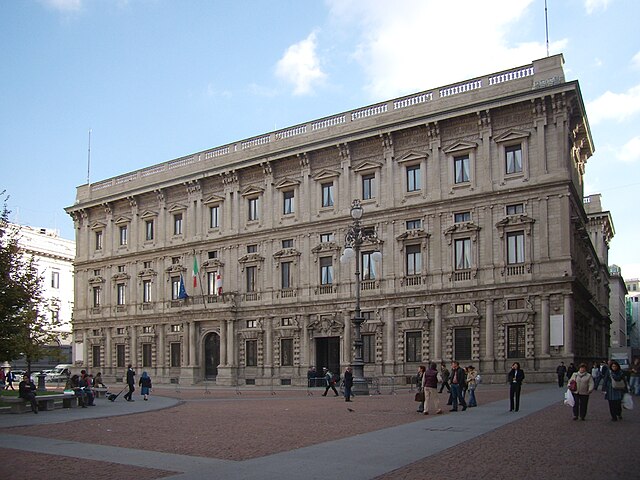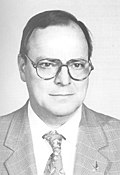Top Qs
Timeline
Chat
Perspective
Mayor of Milan
From Wikipedia, the free encyclopedia
Remove ads
The mayor of Milan (Italian: sindaco di Milano; Lombard: Sindech de Milan) is the first citizen and head of the municipal government of the city of Milan, Lombardy, Italy.
The current office holder is Giuseppe Sala,[1] a centre-left independent who has been in charge since 2016 leading a progressive alliance composed by the Democratic Party, Green Europe and some civic lists. The last election took place in 2021.
Remove ads
Overview
Summarize
Perspective

According to the Italian Constitution, the mayor of Milan is a member of the Milan's City Council. The mayor and the other 48 city councillors (consiglieri comunali) are elected by the Italian and EU citizens residing in Milan. Concurrently, albeit with a different ballot paper, nine presidents and 270 councillors are chosen for the nine assemblies of the nine municipalities, often referred to as zones, in which the city is divided, each one having one president and 30 councillors. All the offices are elected for five-year terms.
After the election, the mayor can appoint one vice mayor (currently Anna Scavuzzo) and up to 16 assessors;[2] together they form the municipal government (giunta comunale) and they implement the municipal policies, which are determined and controlled by the City Council. The City Council has also the power to dismiss the mayor or any of the assessors with a motion of no confidence. Similar procedures take place at the municipality level, where the mayor is called the president of the municipality (presidente del municipio) and there are three assessors.
Since 1993, Italian mayors of municipalities of more than 15,000 inhabitants have been directly elected by their respective electorates. Voters can express their choice for the mayor and for a list of municipal councillors not necessarily supporting the same mayor-candidate (voto disgiunto). If no mayor-candidate receives a majority of votes, a run-off election is held two weeks later among the top two candidates. In the list choice, each voter can express one or two preferences for councillor candidates; in the case of two preferences, their gender must be different. The party and civic lists supporting the elected mayor are granted a majority of the City Council seats, divided proportionally to each list result, by means of a majority bonus; the remaining seats are then assigned proportionally to the opposition lists.
The official seat of the mayor and of the City Council is Milan's City Hall, Palazzo Marino, in Piazza della Scala (Municipality 1). Each municipality has its own official seat as well, within its respective territory.
Remove ads
List
Summarize
Perspective
Rectors
Mayors
Kingdom of Italy (1860–1946)
Italian Republic (1946–present)
City Council election (1946–1993)
From 1946 to 1993, the mayor of Milan was chosen by the City Council.
- Notes
Direct election (since 1993)
Since 1993, under provisions of new local administration law, the mayor of Milan is chosen by direct election, originally every four, and since 2001 every five years.
- Notes
- Close to Left Ecology Freedom (SEL)
- Close to Democratic Party (PD), he joined the European Green Party (EGP) on 12 March 2021.
- Election originally scheduled for June 2021 and then postponed due to the COVID-19 pandemic in Italy.
Timeline

By time in office
Remove ads
Elections
Deputy Mayor
The office of the Deputy Mayor of Milan was officially created in 1993 with the adoption of the new local administration law. The Deputy Mayor is nominated and eventually dismissed by the Mayor.
- Notes
Remove ads
See also
References
External links
Wikiwand - on
Seamless Wikipedia browsing. On steroids.
Remove ads

































